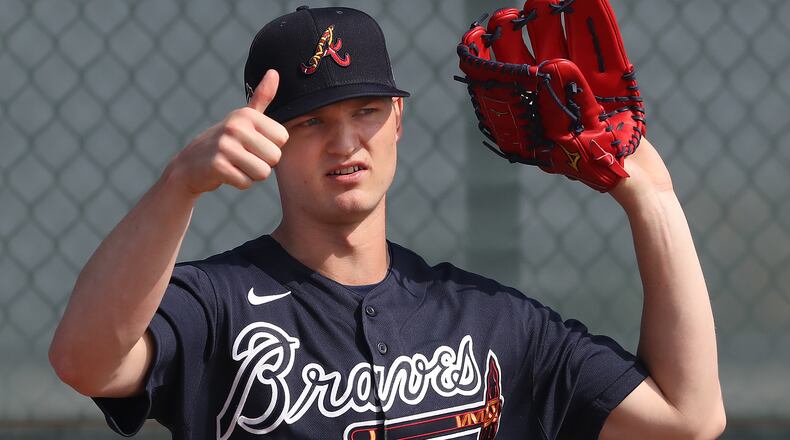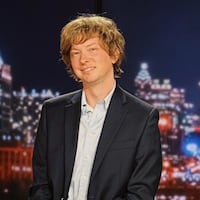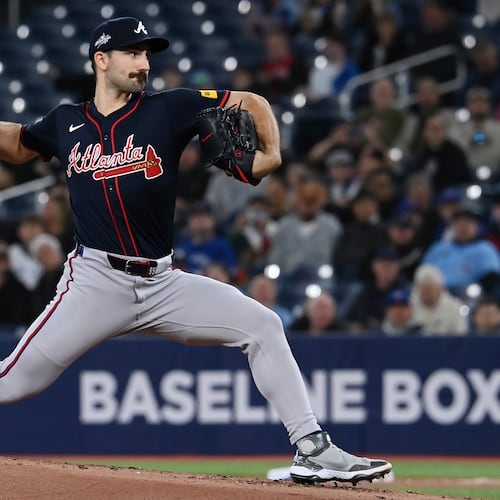Legendary Braves pitching coach Leo Mazzone doesn’t want to put extra pressure on Mike Soroka and Max Fried, but when evaluating the Braves’ present and future, he can’t help but see some of their past.
Mazzone, now 71, coached under Bobby Cox throughout the Braves’ glory years from 1990-2005. He worked with the franchise’s trio of immortalized Hall of Fame pitchers – Greg Maddux, John Smoltz and Tom Glavine – along with an assortment of others, including Steve Avery and Kent Mercker.
The Braves won 14 consecutive division titles over that time, with five National League pennants and a 1995 World Series title. The organization has since searched to recapture a degree of that success. It seems to be on the right track after claiming the last two NL East titles.
Over the past few seasons, the Braves have ushered in a list of young players, many of whom are fulfilling their potential. Those youngsters are largely responsible for the team’s return to prominence – and its good odds of staying there.
Two of the central figures: Soroka and Fried, who – if all goes accordingly – will be rotation fixtures for the next decade. Soroka, in his first full season, was an All-Star who placed sixth in Cy Young voting. Fried had moments of brilliance in his own first full campaign as a starter, finishing with a 4.02 ERA and 173:47 strikeout-to-walk ratio.
Soroka and Fried are considered the faces of the Braves’ new-look rotation. Mazzone still closely follows the team and has enjoyed watching their progression, praising the organization particularly for how it’s handled implementing younger pitchers in the majors.
In some ways, as he watches the Braves’ developing duo, he can’t help but reminisce.
“What I like about Soroka, I love his mound presence,” Mazzone said. “I love the way he changes speeds and makes the ball move. If I say he’s a poor man’s Greg Maddux, that’s a compliment. There’s a calmness going on. Just watching his mound presence and listening to him talk, watching him like that, reminds me of a pitcher, not a thrower.
“Fried, he’s that over-the-top guy with a nice breaking ball and fastball. He’s in that Avery category. Listen to him talk, he sounds very mature too. It’s a great 1-2 punch to build on and win a World Series with.”
Mazzone “keeps waiting” for Sean Newcomb’s breakout, so he’s eager to see how the left-hander performs in his return to the rotation. Mazzone sees the obvious talent in Mike Foltynewicz, whom he feels can perfectly round out a rotation.
“If Foltynewicz is on the back end of your rotation, then you’re going to have a great rotation,” he said. “If he’s the No. 1 guy, you’re not going to be as good. That’s nothing against him, I think he’s a good pitcher.”
Mazzone likened it to recent Braves rotations led by Julio Teheran. He acknowledged Teheran is a steady pitcher, but you’d prefer him as your No. 5 instead of your No. 1.
Still, Foltynewicz – an All-Star two seasons ago – possesses a higher ceiling than many stereotypical back-end starters. Mazzone’s thoughts were more a compliment to the Braves’ rotation depth and a wait-and-see stance on Foltynewicz’s search for consistency.
The pitching sage spoke glowingly of the Braves’ current mix, which includes veterans Cole Hamels and Felix Hernandez among the younger players. He echoed the franchise’s coaches in stressing how much a wily veteran or two can help.
Ian Anderson, the team’s top pitching prospect, is knocking on the door. Kyle Wright, Bryse Wilson and Touki Toussaint are fighting for major-league innings. There are others in the minors approaching, including Tucker Davidson and Kyle Muller. Having seasoned pitchers around as mentors can only help their growth.
But for now, the focus is on Soroka and Fried, who’ve already pitched their way into the Braves’ long-term plans. Mazzone credits both players for not being obsessed with velocity – a common trend among pitchers in today’s game – and instead focusing on their spots. He admires their ability to outlast adversity and rebound.
He also has little concerns with either’s workload. Mazzone said he’d expected both to log around 200 innings this season, which now won’t be feasible given the season’s indefinite delay because of the coronavirus outbreak.
When he was an instructor, Mazzone hoped four starters could provide roughly 200 innings each. The game has since drastically changed: Only 15 pitches exceeded 198 innings last season, while only 22 went over 188 frames.
Pitchers’ health is the bottom line. Teams have decided, for better or worse, they’ll play it safer with their arms. The increased emphasis on velocity has burned pitchers out quicker, according to Mazzone, which also factors into the innings totals.
“Velocity is way overused in the game,” he said. “Guys are cranking up that radar gun and blowing out.”
Mazzone referenced Cox’s “max-out inning,” when a starter would enter what was deemed his final frame and he’d exhaust whatever he had left. As Mazzone put it: “The amount of effort you put into your pitches is more important than pitch count. Bobby established a max-out effort inning, and that meant the starter was done afterwards.”
However the Braves handle their pitchers in the shortened 2020 season, Mazzone is confident in his long-time friend leading the clubhouse, manager Brian Snitker.
“I think Brian Snitker is the closest thing you can get to understanding that prior to this evolution of analytical knowledge to the present,” Mazzone said. “He had a chance to be around these guys who were so successful. He’s the best one, who’s done it, to cipher through it all and find a happy medium. There couldn’t be a better person managing that club.”
About the Author
Keep Reading
The Latest
Featured


